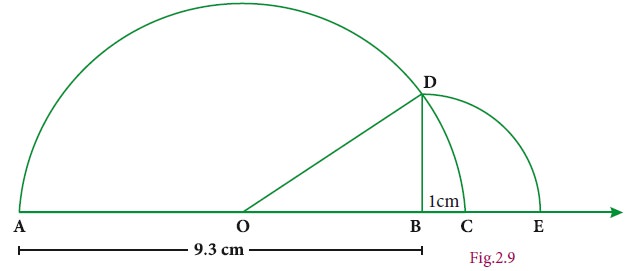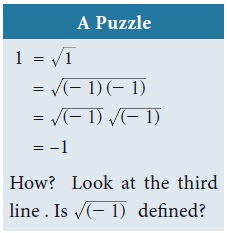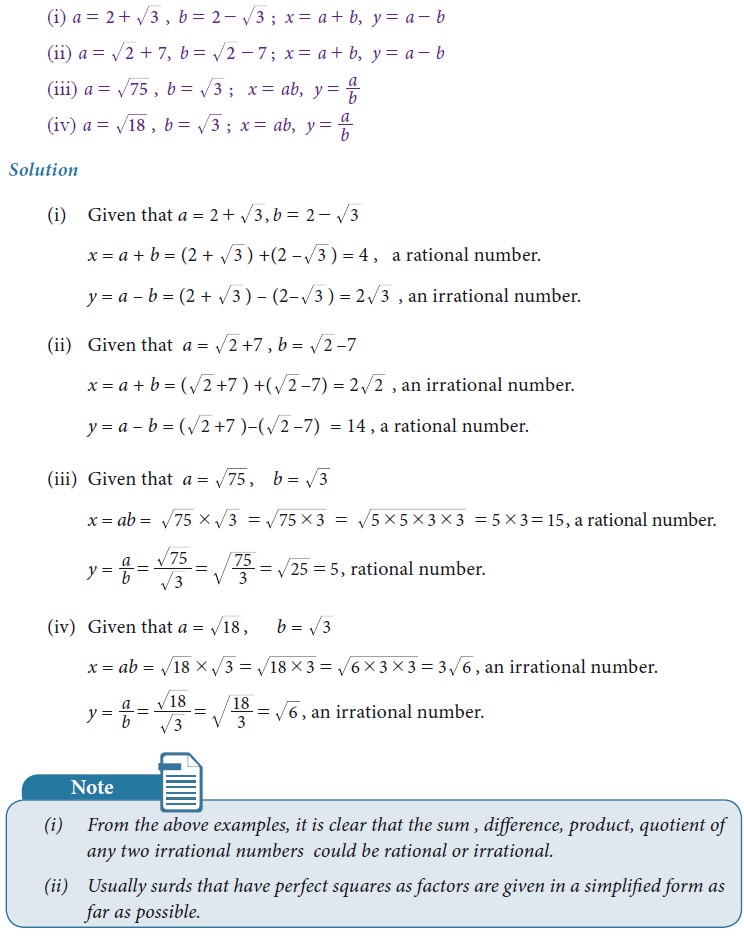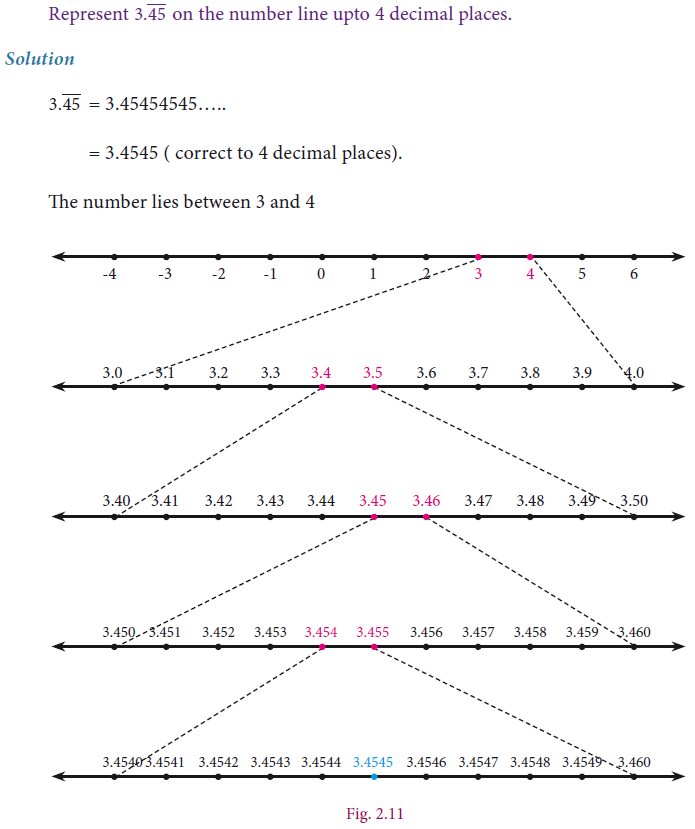Type or Division, Solved Example Problems | Mathematics - Real Numbers | 9th EM Mathematics : Real Numbers
Chapter: 9th EM Mathematics : Real Numbers
Real Numbers
Real Numbers
The real numbers consist of all the rational
numbers and all the irrational numbers.
Real numbers can be thought of as points on an
infinitely long number line called the real line, where the points
corresponding to integers are equally spaced.

Any real number can be determined by a possibly
infinite decimal representation, (as we have already seen decimal
representation of the rational numbers and the irrational numbers).
Example 2.14
Represent √9.3 on a number line.
Solution
·
Draw a line and mark a point A on it.
·
Mark a point B such that AB = 9.3 cm.
·
Mark a point C on this line such that BC = 1 unit.
·
Find the midpoint of AC by drawing perpendicular
bisector of AC and let it be O
·
With O as center and OC = OA as radius, draw a
semicircle.
·
Draw a line BD, which is perpendicular to AB at B.
·
Now BD = √9.3 , which can be marked in the number line as the
value of BE = BD = √9.3.


1. The Square Root of a Real Number
You have already come across the concept of the
square root of a whole number, decimal
fractions etc. While you easily compute values like √169 (which give whole number
answers), you also encounter values like √5, √18 , ...
etc that yield irrational solutions.
The number 25 has two square roots 5 and –5.
However, when we write √25 , we
always mean the positive square root 5 (and not the negative square root –5).
The symbol √ denotes the positive square root only.
If a is a rational number, any irrational number of
the form √a will
sometimes be referred to as a surd. A real number such as 2√3 will be loosely referred to as surd, since it can be expressed as √12 (How?). We may also say an
expression such as √3 + √2 is a surd, although technically we should say
that it is a sum of two surd.
Is the number π a surd?
No. It cannot be expressed as the root of a rational number, or a finite
combination of such numbers.
Recall the basic rules for square roots:
If a,b are positive numbers, then

Example2.15
Find whether x and y are rational or
irrational in the following.

2. The Real Number Line
Visualisation through Successive Magnification.
We can visualise the representation of numbers on
the number line, as if we glimpse through a magnifying glass.
Example 2.16
Represent 4.863 on the number line.
Solution
4.863 lies between 4 and 5(see Fig. 2.10)
1.
Divide the distance between 4 and 5 into 10 equal
intervals.
2.
Mark the point 4.8 which is second from the left of
5 and eighth from the right of 4
3.
4.86 lies between 4.8 and 4.9. Divide the distance
into 10 equal intervals.
4.
Mark the point 4.86 which is fourth from the left
of 4.9 and sixth from the right of 4.8
5.
4.863 lies between 4.86 and 4.87. Divide the
distance into 10 equal intervals.
6.
Mark point 4.863 which is seventh from the left of
4.87 and third from the right of 4.86.

Example 2.17
